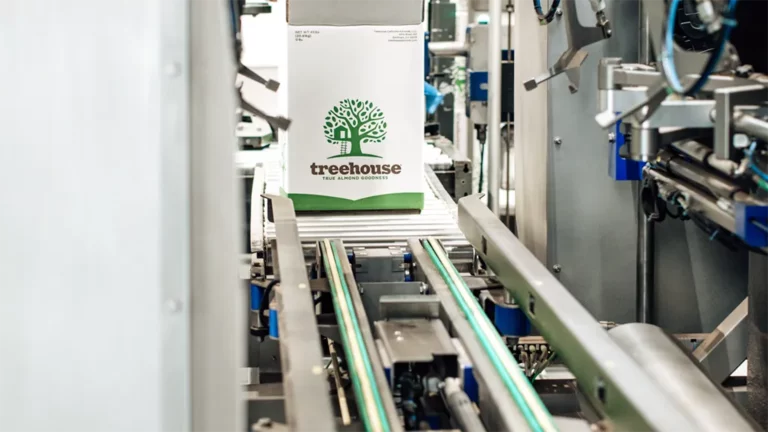Empty cart
Oh no! It appears your cart is empty. Add some almonds to your daily regime with the Treehouse products.
All Blog PostsAlmond Market UpdatesNews
Treehouse Almond Market Update March 12th, 2020
A month ago, after the January position report revealed 2019 crop receipts on the upper end of expectations, we noted that buyers had the upper hand. Since then buyers have had an additional assist from good bloom weather in California and increasing worldwide concern about COVID-19. So here we are a month later with almond prices down about 20 cents per lb, but with solid shipments and sales continuing to reflect fundamentally healthy demand. Let’s take a quick look at the numbers before doing our best to summarize a market that is adjusting to evolving uncertainties.
February shipments from California handlers totaled 201.8 million lbs, up 7.9% from February shipments of 187.0 million lbs a year ago. Strong February shipments were seen in the domestic market (up 10% at 64.4 million lbs) and India (up 63% at 22.8 million lbs). A surge in Moroccan shipments which previously routed through the Spanish port of Ceuta (up 617% to a materially significant 5.4 million lbs) is worth noting. As expected China / Vietnam shipments continue to struggle (down 47% at 2.9 million lbs), while Western Europe’s upward trend paused in February (down 3% at 54.4 million lbs) as Spanish imports slowed.
Season-to-date California shipments are now up 5% at 1,473 million lbs. A quick summary of season-to-date totals reflects robust worldwide demand:
Positives are widespread
• Domestic up 1.5% at 433 million lbs. Manufactured shipments powering along, up 12% at 201 million lbs
• North America (Canada and Mexico) up 10% at 55 million lbs
• India up 11% at 175 million lbs
• Japan up 11% at 52 million lbs
• Western Europe up 11% at 368 million lbs
• Central and Eastern Europe up 20% at 26 million lbs
• Middle East up 28% at 156 million lbs
• Africa up 33% at 30 million lbs
On the negative side, California shipments have seen drag created by a Chinese tariffs (combined North and South Asia down and a good 2019 Australian crop at a little over 200 million lbs.
• China/ Hong Kong down 21% at 81 million lbs.
• Vietnam down 80% at 8.7 million lbs
• Australia/ New Zealand down 30% at 4 million lbs
While we anticipate some lost consumption in the Chinese market due to higher pricing and more recently the corona induced slowdown, real consumption numbers are not as drastic as consumers there have switched to zero duty Australian supply. We insert a little hope here as Chinese companies can now apply to their government for a “Section 301” tariff exclusion (reducing duty from 55% to 25%) on California almond imports. We have yet to see how this works in reality and volumes that will be allowed.
Receipt numbers come as little bit of a relief to California sellers, only adding 22 million lbs to total 2531 million lbs. It looks as though the 2019 crop will not exceed 2550 million lbs.
While hullers wrapped up in February, dry and warm weather provided very good bloom conditions with ample overlap and bee hours. While far too early to make any crop prognostication we would say the market is anticipating another sizable increase in bearing acreage and talk of a crop in the 2700 to 2900 million lb range.
Despite the uncertainty and a falling market, record new sales of 192 million lbs for the current crop were posted in February. This compared to new February sales of 150 million lbs a year ago, which itself was a record at the time. Sold and shipped as a percentage of the crop (2550 million lbs) is at a very respectable 82%. The sold percentage would have been further along if the crop had come in lighter as most had expected earlier. Last year at this time handlers were sitting at 86% sold and were facing a tight transition to the new crop.
Market prices, as mentioned in the opening paragraph, have dropped about 20 cents per lb over the past month. Last month’s position report confirmed the bigger than expected 2019 crop and then good bloom conditions caused standards to drop from about $2.70 to the $2.45 to $2.50 per lb FAS range. We have seen consolidation over the past couple of weeks, with a tightening spread on the offers and levels close to $2.50 per lb. New crop is seen at a 5 to 10 cent discount. Current crop nonpareil remains difficult to sell at any premium. Adding to the pressure, Indian inshell buyers have gone quiet over the past weeks.
All this is happening in the context of a quickly evolving coronavirus threat in Europe and the USA. Financial markets have been rocked back on their heels as supply-side disruptions have now spread into consumer demand concerns. It appears that at least in the US and Europe the situation will get worse before it gets better. For almonds, we see a mixed bag. In the short-term, there have been strong call-offs for shipments as large retailers experience panic buying on certain items. Fortunately, almonds being nutrient-dense and easily stored have been in good retail demand domestically. We are also seeing an increase in safety stocks from manufacturers trying to anticipate any disruptions. On the other hand, there is a sharp hit to the foodservice sector as travel, hotels and restaurant businesses slow drastically. Logistics is becoming more difficult as container ships cut back on stops and routes. We are also very aware that we are on the front end of the spread in USA and while California factories currently appear unthreatened with very few confirmed cases in the valley, this could change. Needless to say, handlers are on high alert with a double down on GMP’s and common-sense precautions.
With all the uncertainty it is tough to make any reasonable comments on what to expect over the next few months. We will leave with a few bullet points:
• Demand is good, summarized above
• A massive 2020 crop is not a given. In our experience, a wet winter usually encourages yield. Statewide snowpack as of March 11th is only at 38% of normal. February was the 2nd driest on record in the southern end of the valley. Following an “on” year for nonpareil in 2019 it is not expected that orchards will deliver back to back bumper crops. We would currently lean towards a best guess 2020 crop number of 2750 million lbs (2200 lbs per acre on 1,250,000 bearing acres). Let’s see what the next two months of industry forecasts bring.
• Our hope is that the corona induced turmoil is sharp and short, but this is impossible to predict.
Buyers will be necessarily cautious as this all unfolds.
Best regards
Jonathan Meyer
CEO
Treehouse California Almonds, LLC.
Stay tuned for the release of significant almond industry information, such as almond crop estimates and acreage reports. You’ll also find Almond Board shipping reports and related analysis from the Treehouse Almonds Leadership Team.

Be in the loop for vital news about the California almond market.
Enjoy 10% off when you order 6 or more